- Share
- Like
- Tweet
- Digg
- Tumblr
- VKontakte
- Love This
- Odnoklassniki
- Meneame
- Blogger
- Amazon
- Yahoo Mail
- Gmail
- AOL
- Newsvine
- HackerNews
- Evernote
- MySpace
- Mail.ru
- Viadeo
- Line
- Comments
- SMS
- Viber
- Telegram
- Subscribe
- Skype
- Facebook Messenger
- Kakao
- LiveJournal
- Yammer
- Edgar
- Fintel
- Instapaper
- Copy Link
French practice GPAA (gaëlle péneau architectes associés) has designed the renovation of the University of Paris IV-Sorbonne’s Clignancourt Centre built in 1968 on a former military site located between Boulevard Ney and the Paris Beltway, in the city’s 18th arrondissement. Three major areas in the Clignancourt Centre are open to the general public: the library, the gymnasium and the auditorium. These areas are directly visible from the road, each with its own recognizable identity.

Image © 11h45
The site is surrounded by two imposing structures to the North and West: the OPAC housing block and the SAGI university accommodation which block views and sunlight, but serve as an acoustic screen against the Beltway. To the East the site is open to the bast Poissonniere sports grounds, while to the South it is framed by the quiet residential Rue F. De Croisset.
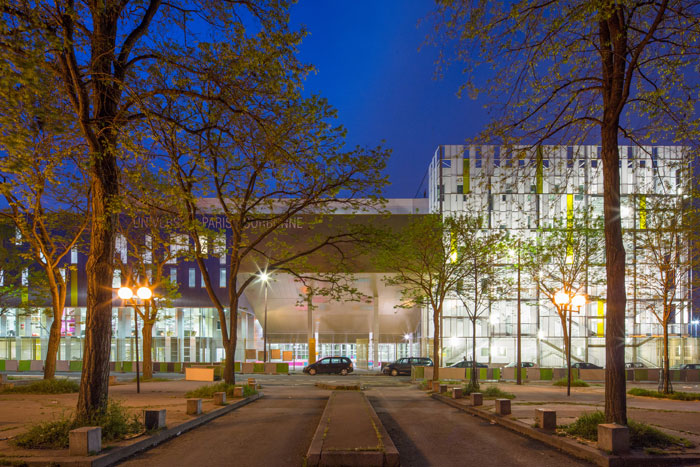
Image © 11h45
The centre was rebuilt around a central garden surrounded by four distinct structures serving different functions. The library, the gymnasium and the auditorium face the city and make up the Centre’s main façade, while to the East the monumental façade of the teaching wing marks the edge of the site.
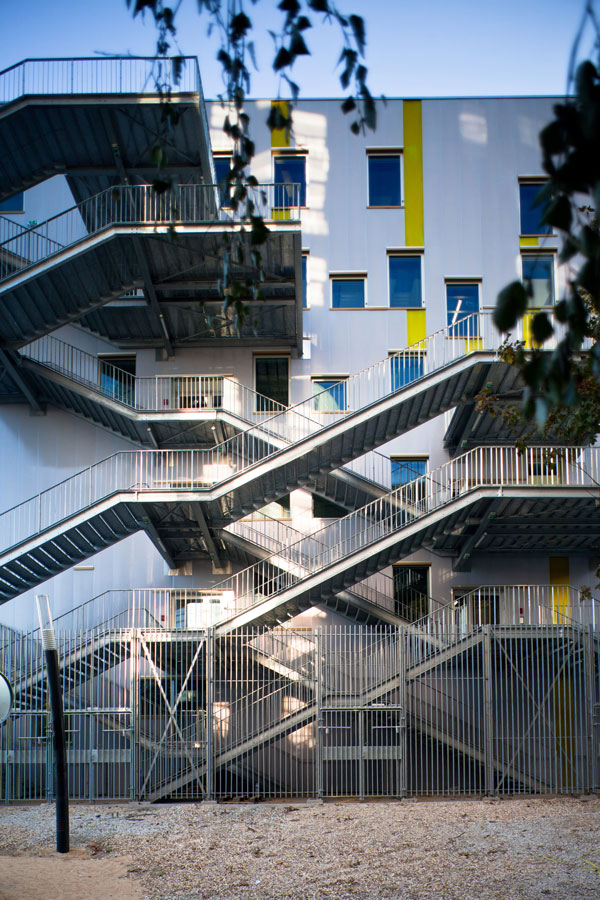
Image © 11h45
The main auditorium is accessed through a courtyard, providing visual connection to the interior through a glass-panelled entry hall. The architects used alveolar polycarbonate as the only material to establish a contemporary new identity for the Centre.
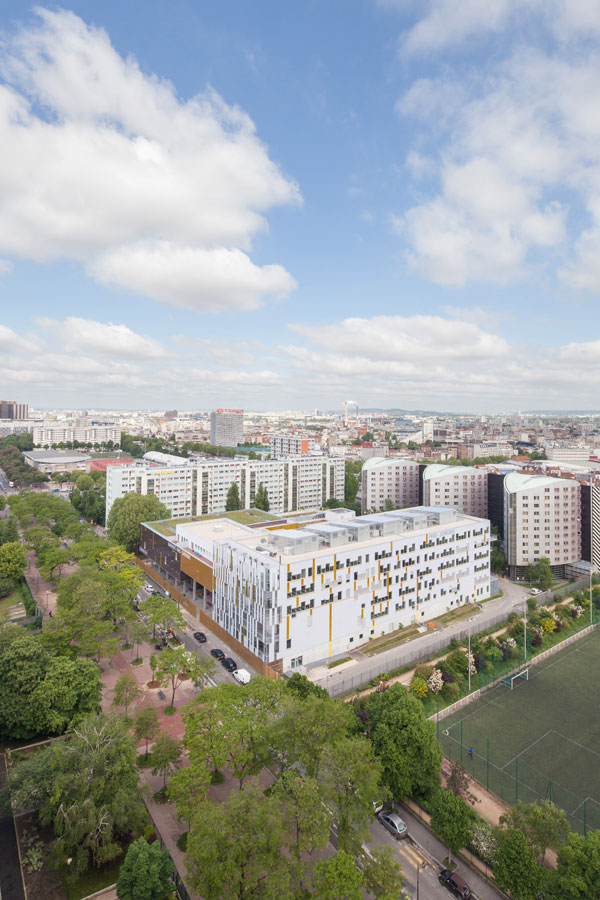
Image © 11h45
Bright colours were used to create identities and to identify each of the buildings by function. The choice of the colours reference university symbolism. Daffodil yellow, traditionally associated with arts, literature and philosophy was used for the library, but also inks the different buildings through lines and ribbons which echo throughout the volumes.
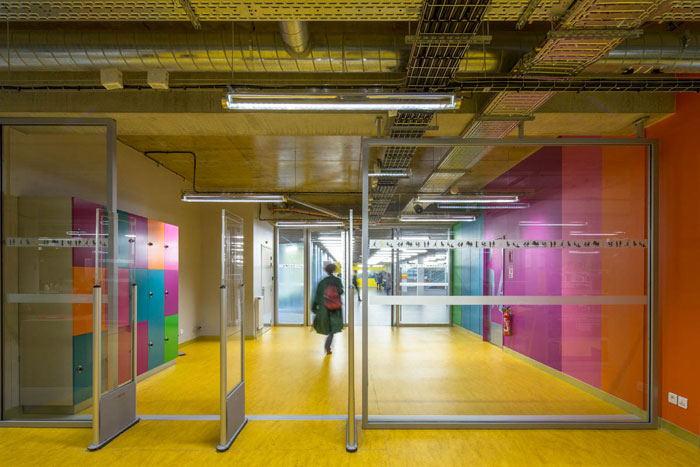
Image © 11h45
Gold was used to emphasize the auditorium’s structure, marking it as the Centre’s flagship building, as well as indicating the entrance to the site.
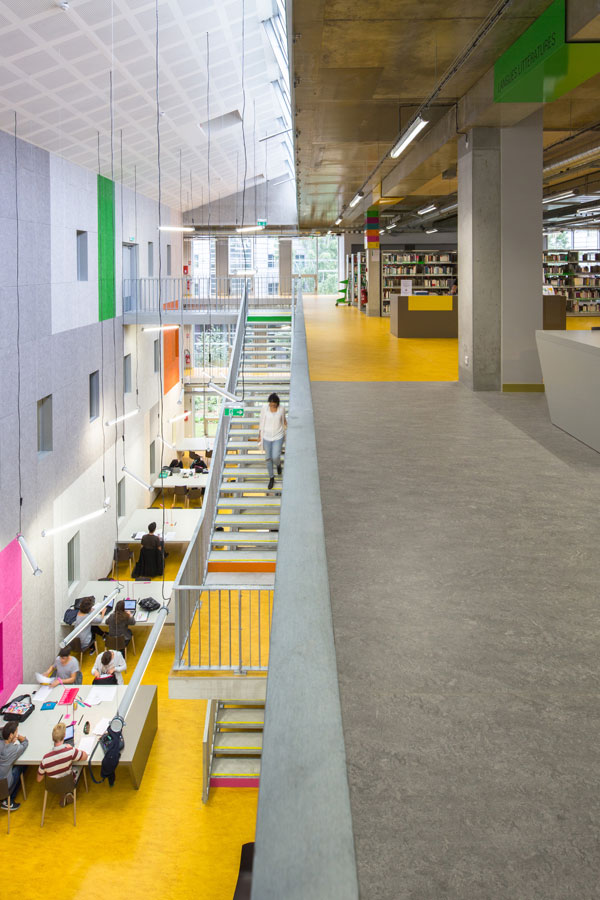
Image © 11h45
Light grey and opalescent was used for the teaching wing and gymnasium to balance the colour scheme and create contrast against the vivid colours.
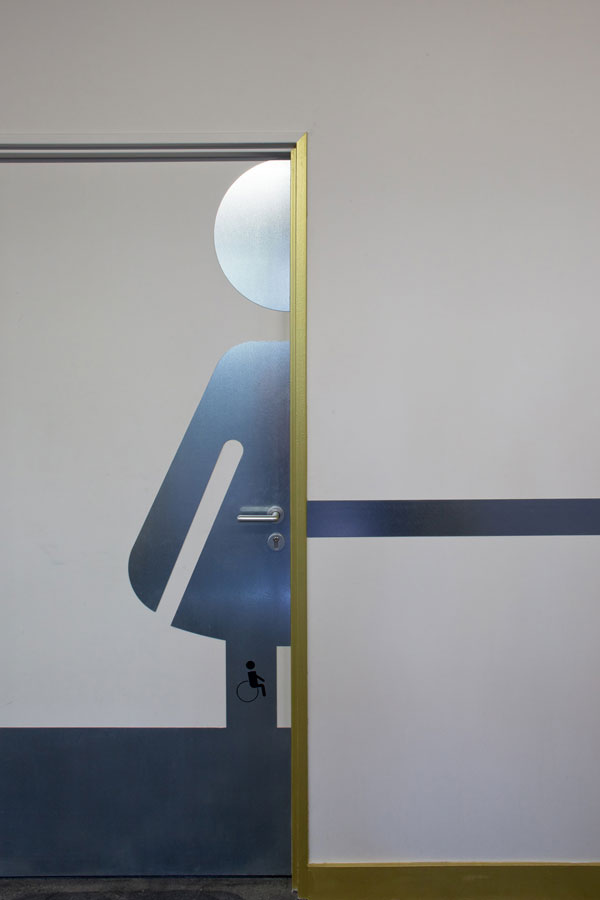
Image © 11h45
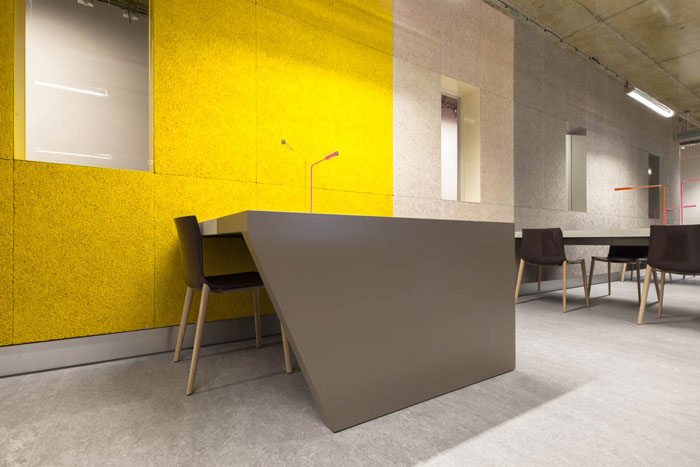
Image © 11h45
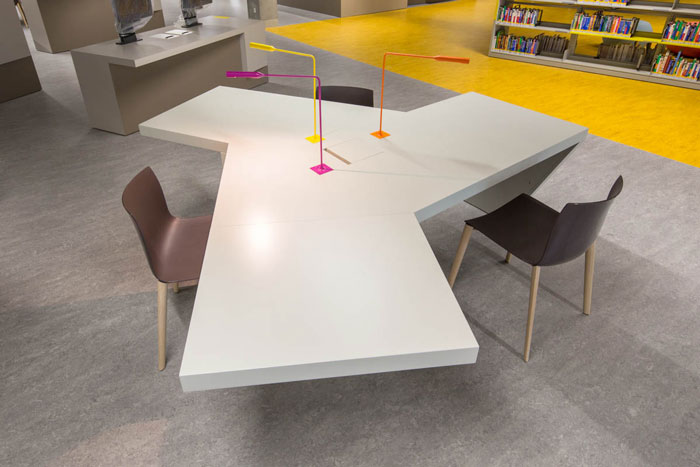
Image © 11h45
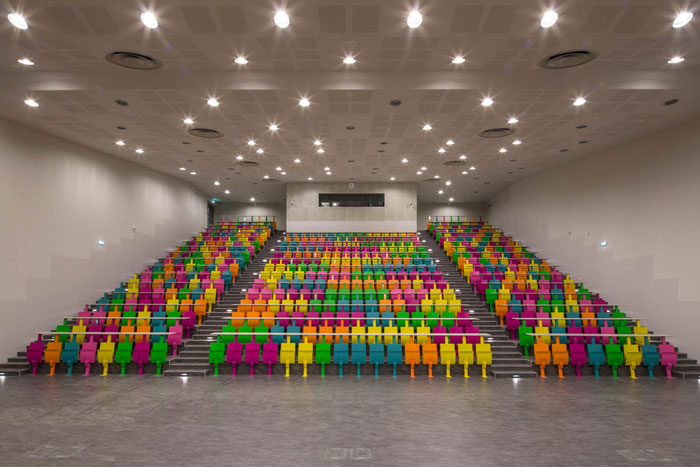
Image © 11h45

Image © 11h45
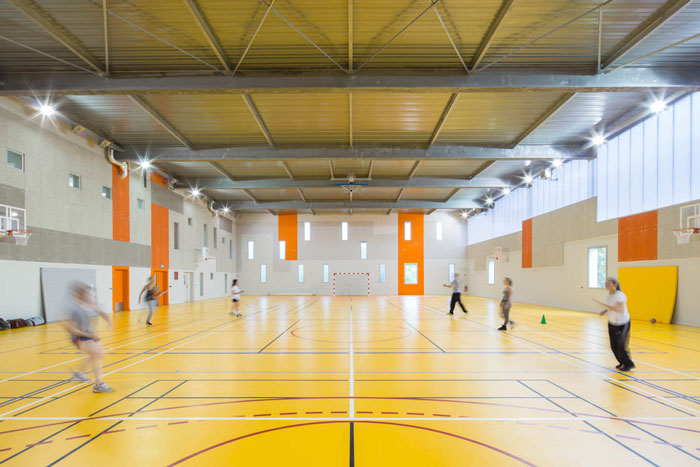
Image © 11h45
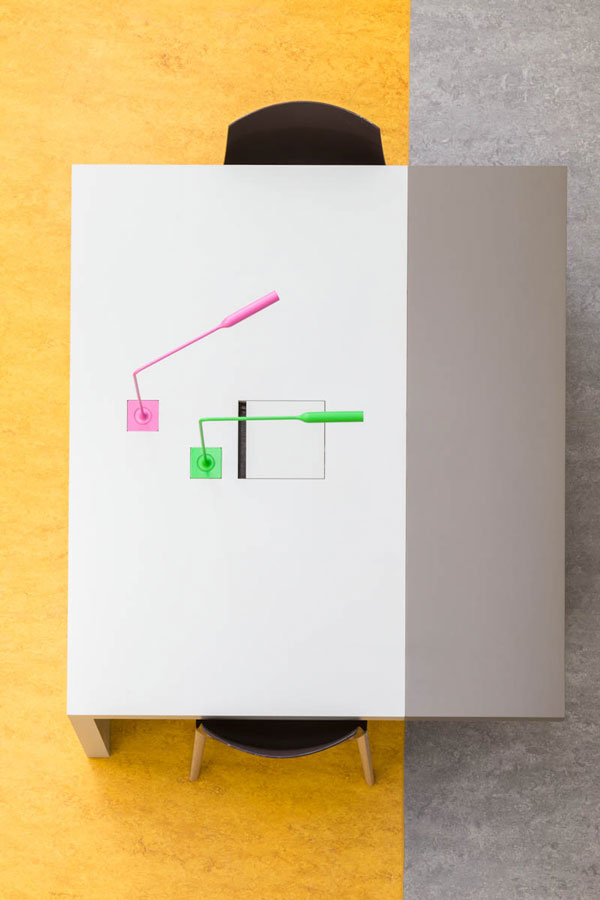
Image © 11h45

Image © GPAA

Image © GPAA
Facts:
Architects: gaëlle péneau architectes associés (GPAA)
Location: University of Paris, Université Diderot Paris 7, 1 Rue Victor Cousin, 75005 Paris, France
Client: Bouygues Bâtiment IDF
Area: 20,212 m²
Year: phase 1 completed in July 2011 / phase 2 completed in May 2013
Photographs: 11h45
